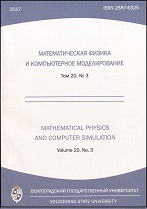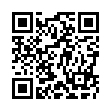|
This article is cited in 8 scientific papers (total in 8 papers)
Modeling, informatics and management
Data mining of microwave radiometry data in the diagnosis of breast cancer
A. G. Losev, V. V. Låvshinskiy
Volgograd State University
Abstract:
The paper deals with development of a new method for the thermometry data mining, which is designed as a basis for creation of the intelligent diagnostic-advisory systems. The method is based on quantitative descriptions of medical knowledge about the behavior of the temperature fields of the mammary glands.
Previously gained knowledge has been represented as a base set of grouped functions of temperatures, e.g. qualitative feature “a large temperature difference between nipple and a certain point of mammary gland” can be described by a set of functions of the form $|t_{0} - t_{i}|, i = 1, \dots, 9$, where $t_{i}$ is the temperature of the point number i. According to the qualitative feature, a large value of such functions may be an indication of pathology. Hence, we will bind a range of unacceptable values with certain functions and denote produced pairs as features. Thus, on the base of features we can determine possible anomalies of the temperature fields of mammary glands. It's clear that some features probably are false features, so a set of features requires preprocessing. One way to do this is to assign a weight to a feature and analyze it only if the weight is larger than some minimum acceptable value. Weighted features were applied in a logistic regression algorithm.
With the features gained, the average breast cancer diagnosis accuracy on the test sample is about 67 percent. Moreover, each received feature has a qualitative description and can be applied in more complex algorithms.
Keywords:
data mining, microwave radiothermometry, intelligent advisory systems, highly informative signs, breast cancer.
Citation:
A. G. Losev, V. V. Låvshinskiy, “Data mining of microwave radiometry data in the diagnosis of breast cancer”, Mathematical Physics and Computer Simulation, 20:5 (2017), 49–62
Linking options:
https://www.mathnet.ru/eng/vvgum206 https://www.mathnet.ru/eng/vvgum/v20/i5/p49
|

|




 Contact us:
Contact us: Terms of Use
Terms of Use
 Registration to the website
Registration to the website Logotypes
Logotypes








 Citation in format
Citation in format 
